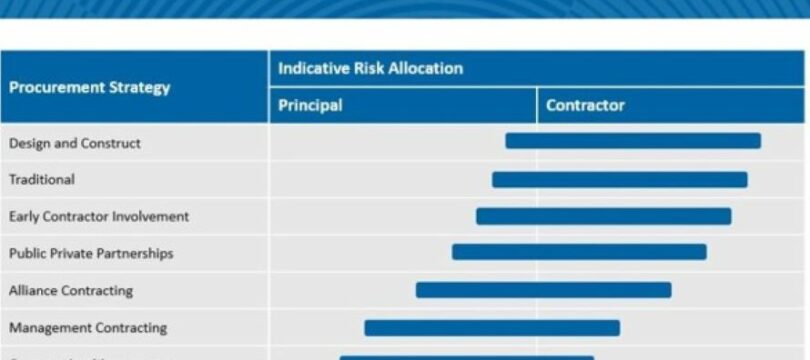
The alliancing procurement model has been a popular procurement model adopted across various industries, particularly in sectors where complex, large-scale projects are common including within the civil construction, infrastructure, oil and gas, transport and energy sectors. However, it is a relatively new concept for other industries, including those within the social infrastructure space whereby they are tailoring the alliancing procurement model to their specific needs and regulatory environments.
There is a lot of evidence to suggest that when an alliancing procurement model is executed well that it can be a valuable approach for major programmes and projects, but it is still important to carefully consider when it is most appropriate to use. The alliancing procurement model is most appropriate to use in specific situations where collaboration, risk-sharing and a shared commitment to project success are paramount. Particularly when projects are complex, there are tight timeframes, the scope is not clear and there is tight timeframes or constraints to deal with.
If you are considering whether an alliancing procurement model might be the right approach for your project, here are some situations where the alliancing model may be particularly well suited:
- Complex and High-Risk Projects: When a project is particularly complex, involves a high level of risk or has a large degree of uncertainty, an alliancing model can help distribute and manage those risks more effectively among the parties involved.
- Long-Term Relationships and Repeated Projects: Alliancing is beneficial when parties expect to work together on multiple projects or programmes of work over an extended period. It helps foster trust, collaboration and a shared commitment to success over the long term.
- Innovative or Cutting-Edge Projects: Projects that require innovative solutions, new technologies or unconventional approaches can benefit from an alliancing model. The collaborative nature encourages creative problem-solving and the integration of diverse expertise.
- Projects with High Stakeholder Involvement: If there are numerous stakeholders with varying interests in a project, an alliancing model can help align these stakeholders goals and expectations from the outset. Taking them along the journey is critical for this to occur which the alliance procurement model encourages.
- Projects with Evolving Requirements: In situations where project requirements may change or evolve over time, an alliancing models flexibility can be advantageous. It allows for adjustments and adaptations as the project progresses. It is also useful when there is an undefined scope at the start of the project which is common at the start of the Alliance.
- Projects with Shared Objectives and Outcomes: When there is a clear shared objective for the project and all parties have a vested interest in achieving that objective, an alliancing model can help align interests and foster a collective sense of ownership.
- Projects with a Focus on Sustainability and Environmental Considerations: Alliancing models can be beneficial for projects that prioritise sustainability as they encourage a holistic approach to design, construction and operation, incorporating various perspectives on environmental impact.
- Projects Requiring Early Collaboration and Integration: Alliancing is effective when early involvement of key stakeholders (eg owners, funding partners, designers, contractors) is critical for project success. This can be particularly important for projects that require extensive coordination and planning.
- Projects with a History of Disputes or Adversarial Relationships: If there’s a history of disputes or adversarial relationships between project stakeholders, an alliancing model can help reset the dynamic and foster a more collaborative environment. The Alliance Principles drive a shared risk model approach which is critical to driving a collaborative culture.
- Projects with Performance-Based Incentives: When there is a desire to incentivise high performance and shared accountability, an alliancing model with performance-based incentives can motivate parties to work towards common goals. Incentivising the Limb 3 part of the model can drive the right behaviour if the KRA/KPI framework is designed right.
It’s worth noting that while the alliancing procurement model can be highly effective in these situations, it may not be the best fit for every project. Factors such as industry norms, regulatory requirements and the specific characteristics of the project should also be considered when determining whether to use an alliancing approach versus an alternate project delivery model. Additionally, legal and contractual frameworks should be carefully established to support the collaborative nature of the alliance. Adopting a Multi-Criteria Analysis (MCA) approach to your procurement model approach selection is critical in ensuring you weigh up all the factors in choosing the procurement model that works for your project or programme.



